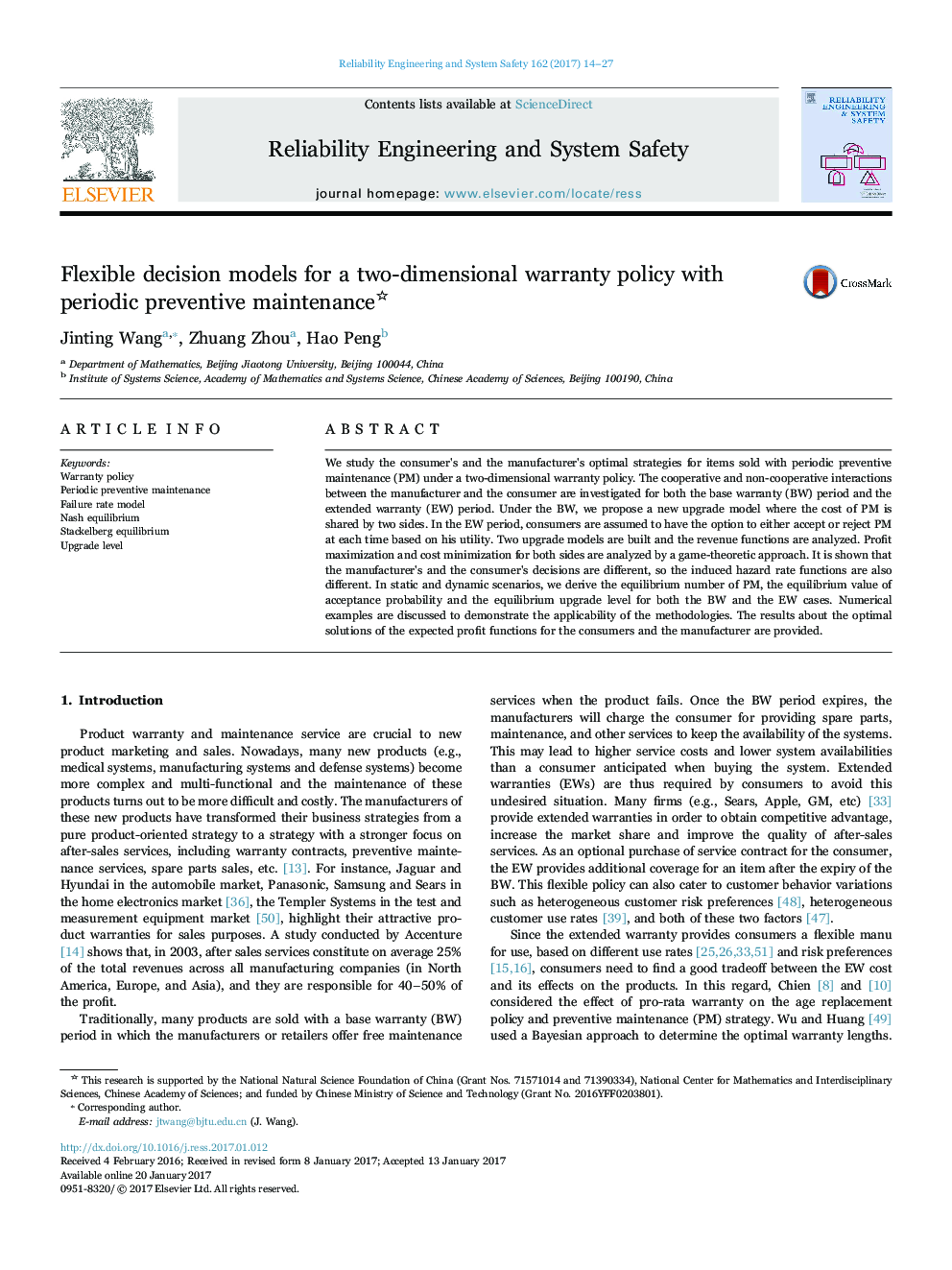| Article ID | Journal | Published Year | Pages | File Type |
|---|---|---|---|---|
| 5019347 | Reliability Engineering & System Safety | 2017 | 14 Pages |
â¢A two-dimensional warranty policy with periodic preventive maintenance and extended warranty is studied.â¢Manufacturer and consumers can make flexible decisions in both basic and extended warranty periods.â¢Consumers have a probability of accepting the PM service in the extended warranty.â¢Two upgrade models are built and the revenue functions are analyzed in the extended warranty period.â¢Profit maximization and cost minimization for both sides are analyzed by a game-theoretic approach.
We study the consumer's and the manufacturer's optimal strategies for items sold with periodic preventive maintenance (PM) under a two-dimensional warranty policy. The cooperative and non-cooperative interactions between the manufacturer and the consumer are investigated for both the base warranty (BW) period and the extended warranty (EW) period. Under the BW, we propose a new upgrade model where the cost of PM is shared by two sides. In the EW period, consumers are assumed to have the option to either accept or reject PM at each time based on his utility. Two upgrade models are built and the revenue functions are analyzed. Profit maximization and cost minimization for both sides are analyzed by a game-theoretic approach. It is shown that the manufacturer's and the consumer's decisions are different, so the induced hazard rate functions are also different. In static and dynamic scenarios, we derive the equilibrium number of PM, the equilibrium value of acceptance probability and the equilibrium upgrade level for both the BW and the EW cases. Numerical examples are discussed to demonstrate the applicability of the methodologies. The results about the optimal solutions of the expected profit functions for the consumers and the manufacturer are provided.
